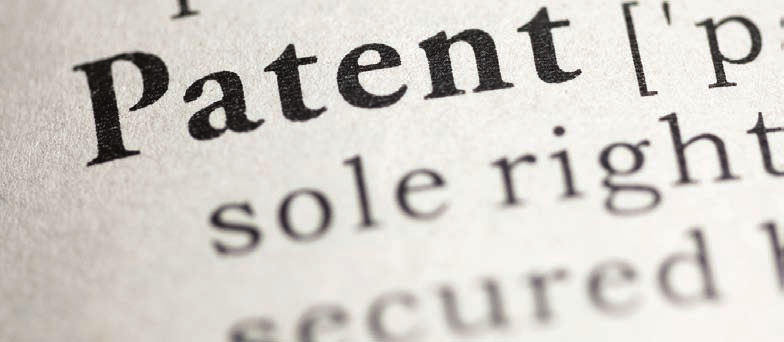
Drawing the Line Between Descriptive and Suggestive Marks
If a business choses a mark because of its ability to emphasize a key characteristic of the product or service that the business offers, it may be in for even more bad news—the mark may be a “descriptive” one and therefore not sufficiently distinctive to warrant legal protection. On the other hand, if the mark is merely “suggestive” such that a mental leap is needed to connect the mark with the product or service, protection may be available. In theory, the distinction between “descriptive” and “suggestive” marks are clear. In practice, however, the line is a blurry one.
THE TRADEMARK SPECTRUM
The purpose of a trademark is to identify the source of a product. A competing mark that confuses consumers about the product’s origin is bad for business—and against the law. Registration simply shifts the burden of persuasion from the party claiming infringement to the party opposing the claim.
A trademark is supposed to distinguish a product and its source from other products in the marketplace. For that reason, courts have created a sliding scale under which the degree of protection a mark receives depends on its distinctiveness. The five categories are (1) generic marks, (2) descriptive marks, (3) suggestive marks, (4) arbitrary marks, and (5) fanciful marks. At one end of the spectrum are generic marks, which receive no trademark protection. A generic mark is simply the common name of the product or the genus of which the product is a species. Examples of generic marks include “lite beer” for light beer, “Convenient Store” for convenience stores, and “Polo” shirts for polo shirts
At the other end of the spectrum are arbitrary and fanciful marks, which are always subject to trademark protection. An arbitrary mark has a meaning that is recognized in everyday life, but that meaning is unrelated to the product or service with which the trademark is attached. For example, “Camel” cigarettes, “Apple” computers, and “Shell” petroleum are arbitrary marks. Fanciful marks are letters or numbers that have no significance other than to identify the product or service. The only function of these terms is to distinguish the source of the products with which they are associated.
In between these two extremes lie descriptive marks and suggestive marks, and the often-blurry distinctions separating them are vital to understand. A great deal of trademark litigation revolves around whether a particular mark belongs in one of these two categories because the answer may dispositively affect the outcome of the case. Establishing that a mark is suggestive means it is inherently distinctive and therefore subject to trademark protection. Conversely, proving that the mark is descriptive may spell victory for the party opposing the claim of infringement because a descriptive mark is not protected unless it has acquired secondary meaning. Secondary meaning can be difficult to demonstrate, as is discussed in the final section of this article.
DESCRIPTIVE VS. SUGGESTIVE
By Definition A descriptive mark describes a function, use, characteristic, size or intended purpose of the product. Notably, a descriptive mark is not a complete description, obviously, but it picks out a product characteristic that figures prominently in the consumer’s decision whether to buy the product or service in question. Other indicators include that upon hearing the mark, one need not use imagination, thought and perception to reach a conclusion as to the nature of goods, that competitors would be likely to need the terms used in the trademark in describing their products, and that others have used the term in marketing a similar service or product.
Some the most obvious examples of descriptive marks use a geographic location to identify the product. For example, “matrimony” for matrimonial services is a descriptive mark. Other familiar examples of descriptive marks include “Holiday Inn” to describe hotels, and “All Bran” to describe cereal.
A suggestive mark also employs terms that relate to the product’s characteristics or intended use. The difference, at least in theory, is that a consumer must make a mental leap to understand the relationship between a suggestive mark and the product. Courts have explained that “suggestive marks connote, without describing, some quality, ingredient, or characteristic of the product.” OBX-Stock, 558 F.3d at 340. A suggestive mark thus requires the observer or listener to use imagination and perception to determine the nature of the goods. Employing this understanding, the court in Xtreme Lashes, 576 F.3d 223 held that the mark “Extend Your Beauty” used in connection with synthetic eyelash extensions could qualify as a suggestive mark.

BUT HOW MUCH OF A MENTAL LEAP IS REQUIRED?
In Playtex Products v. Georgia-Pacific Corp., 390 F.3d 158 (2d Cir. 2004), the court held that the mark “Wet Ones” was suggestive when used in the context of a moist towelette. Although it was acknowledged that “Wet Ones is descriptive in the sense that each of the words describes an attribute of the product—it is wet and it is dispensed one by one,” the court explained that “the term ‘Wet Ones,’ without more, does not itself conjure up the image of a towelette. Wet Ones could plausibly describe a wide variety of products.” It is difficult to reconcile the result in Playtex with the conclusions reached by other courts. For example, the court in Custom Vehicles, Inc., 476 F.3d at 483 categorized the mark “Work-n-Play” as descriptive when it was used for a van that could be used as a mobile office and for recreational purposes. In another case court held that the mark “Earth Protector” was descriptive when used in conjunction with the products and services of an environmental organization.
An argument can be made that the Playtex holding is an outlier because the categorization of the mark was “not seriously disputed” perhaps because in this case numerous studies and surveys supported the claim that Wet Ones is a well-established and famousmark. Still, the fact that a unanimous panel of the court held that “Wet Ones” is a suggestive mark illustrates the difficulty of drawing the line between descriptive and suggestive.
And, although the categorization of “Wet Ones” was not dispositive in the Playtex case, the secondary meaning question is not so easily resolved in most other trademark litigation. Secondary meaning “occurs when, in the minds of the public, the primary significance of a mark is to identify the source of the product rather than the product itself.” For example, “Kentucky” fried chicken is a descriptive mark that has established secondary meanings in consumers’ minds, causing consumers to recognize a brand or source of fried chicken, rather than the place, Kentucky. Courts examine a multitude of factors in determining whether a mark has acquired secondary meaning, including the following: (1) the extent of sales and advertising leading to buyer association; (2) length of use; (3) exclusivity of use; (4) the fact of copying; (5) customer surveys; (6) customer testimony; (7) the use of the mark in trade journals; (8) the size of the company; (9) the number of sales; (10) the number of customers; and, (11) actual confusion.
Establishing that a mark has acquired secondary meaning is therefore a laborious task that often involves expensive consumer surveys, extensive discovery, and expert testimony. The challenge of carrying this burden can dramatically affect the settlement value of a case. As a result, the adjudication of whether a trademark falls on the descriptive or suggestive side of the distinctiveness scale is a critical moment in many trademark infringement cases. While it is easy to understand the difference conceptually, applying these definitions is often tricky at the margins, and predicting how a court will resolve the issue is similarly difficult. This built-in uncertainty may make clients whose trademarks fall in the grey area between descriptive and suggestive hesitant about mounting a defence of their marks. The best strategy is to counsel the client about these issues before the investment is made in a weak mark.
Recent Posts

Condition Precedent and Condition Subsequent under the Indian Contract Act, 1872
Jan 2019

Conceptual Similarity of Trade Marks: The Indian Position
Nov 2018

Decoding the ‘Myth’ behind the 2-Part Claim Drafting Format in the context of the Koniklijke Philips’ Case
Oct 2018